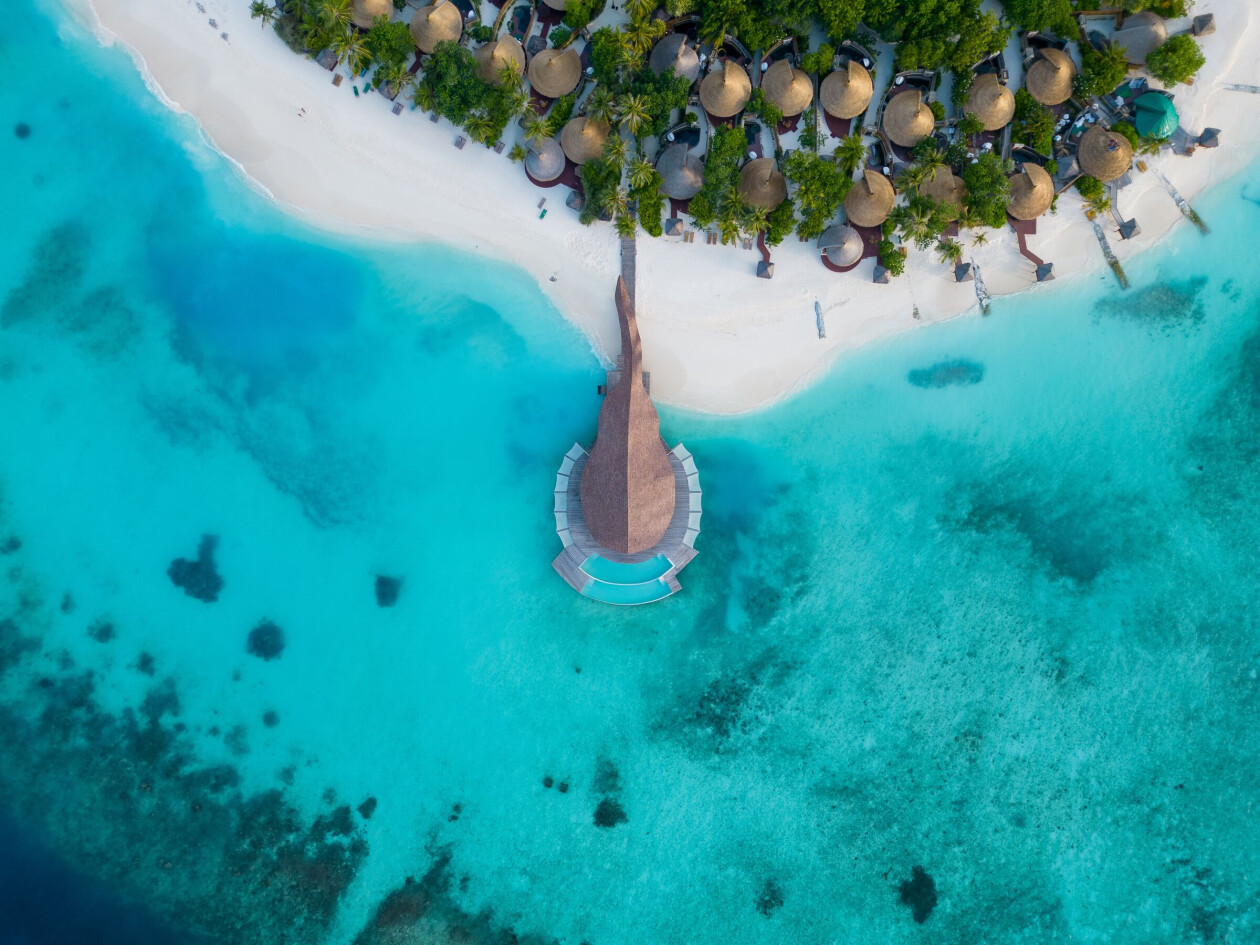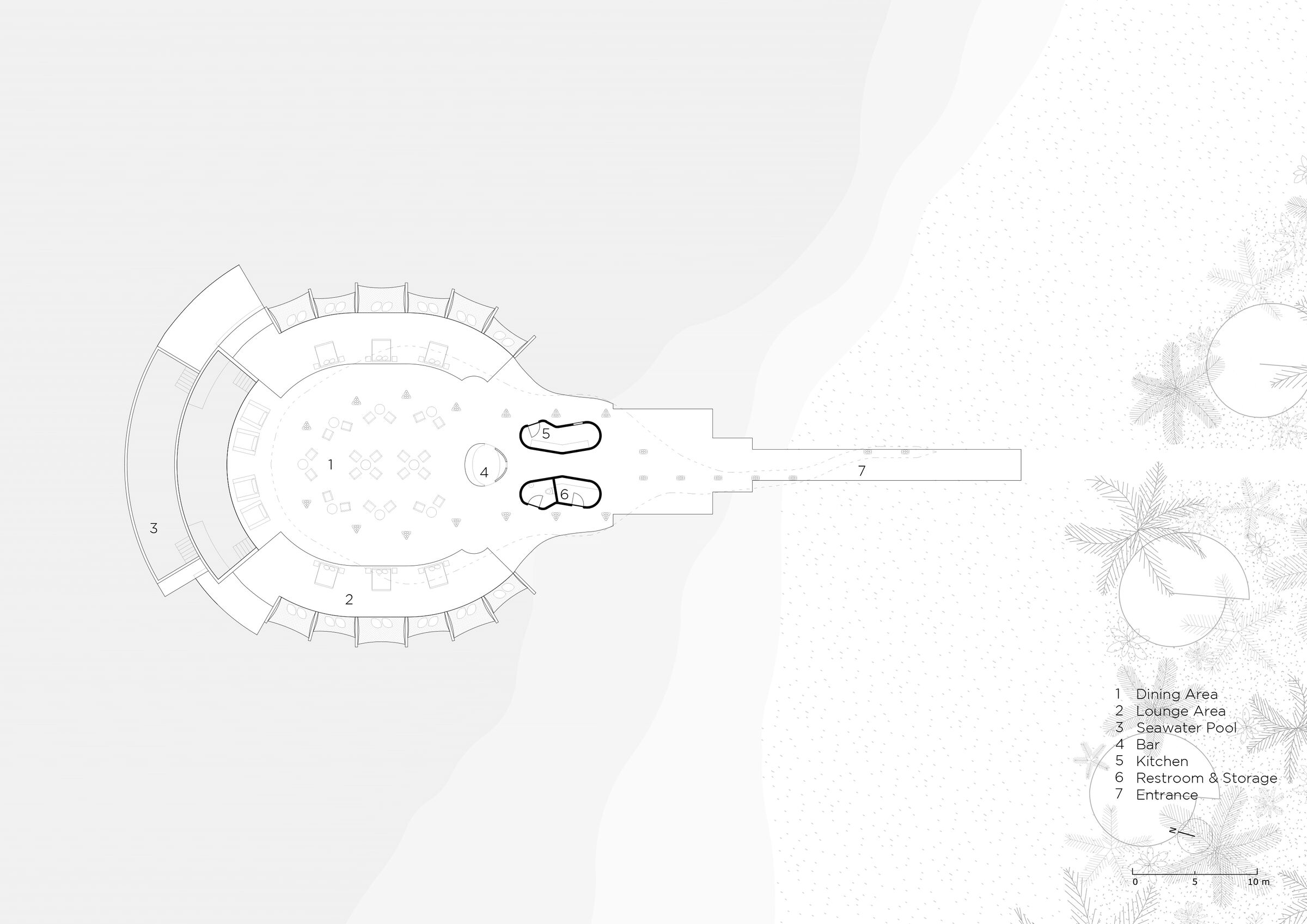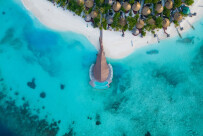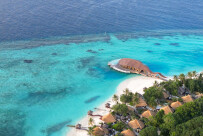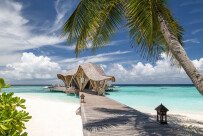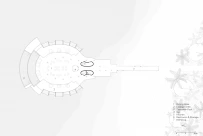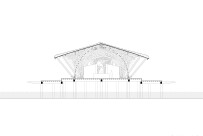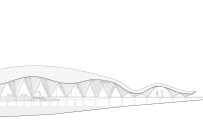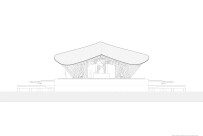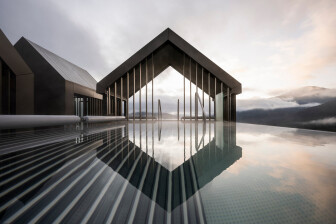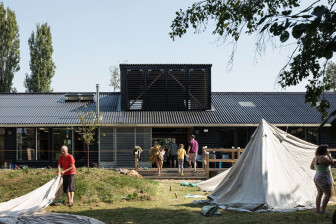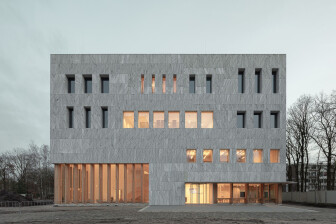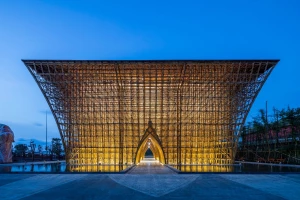Rotterdam-based architectural design studio Atelier Nomadic has completed the Overwater Restaurant at the Banyan Tree Vabinafaru resort in the Maldives. A prepossessing bioclimatic structure, the restaurant is built entirely from bamboo. (Atelier Nomadic is the architectural design studio at Nomadic Resorts.)
Atelier Nomadic describes the structure as a “stunning example of biomimicry” — the design is modeled on the pink whipray, a species of stingray that can be found in the surrounding azure lagoon.
Approached via a timber walkway from the main resort, the structure’s sweeping tail guides visitors into the main, voluminous body — beyond this is a saltwater infinity pool. The open, bioclimatic form is naturally ventilated and meticulously crafted entirely from bamboo. A natural and noble material, the bamboo construction blends harmoniously with the picture-postcard Maldivian landscape.
Olav Bruin, Creative Director and Architect at Nomadic Resorts, is a bamboo ambassador at the World Bamboo Organization — this international body is committed to promoting the use of bamboo from a range of perspectives, including environmental, socio-economic, biological, and cultural. With the Overwater Restaurant, Bruin wished to demonstrate bamboo’s potential as a natural building material at this particular location; moreover, the architect intended to show bamboo’s capacity to play a major role in construction as the building sector transitions towards a more sustainable future. Bamboo is a fast-growing and renewable material with remarkable strength, durability, and versatility. “Bamboo is an extremely effective carbon sink,” says Atelier Nomadic. “We need to move towards a future where buildings actually sequester carbon instead of expelling it.”
A hyperbolic paraboloid that marries concave and convex surfaces is one particular type of bamboo structural system. Atelier Nomadic explains that, “shaped by a series of hyperbolic paraboloid columns and roof trusses, the [Overwater Restaurant] structure reflects the endoskeleton of the Mobulidae family.” (Mobulidae are a family of rays.) The studio used Dendrocalamus Asper bamboo for the restaurant’s main structure (this giant bamboo is native to Southeast Asia). The smaller Gigantochloa Apus bamboo is used for the latticework infill. The intricate roof structure is built entirely out of bamboo and clad with timber shingles.
The restaurant’s interior features a bar, kitchen, restroom, and storage areas clad with black Gigantochloa Atroviolacea bamboo (also known as Java black bamboo). This bamboo contrasts with and complements the paler bamboo columns, latticework, and timber decking. “The rhythmic pattern of the bamboo internodes refers to the glistening light [that] reflects off the crests of the waves,” says Atelier Nomadic.
